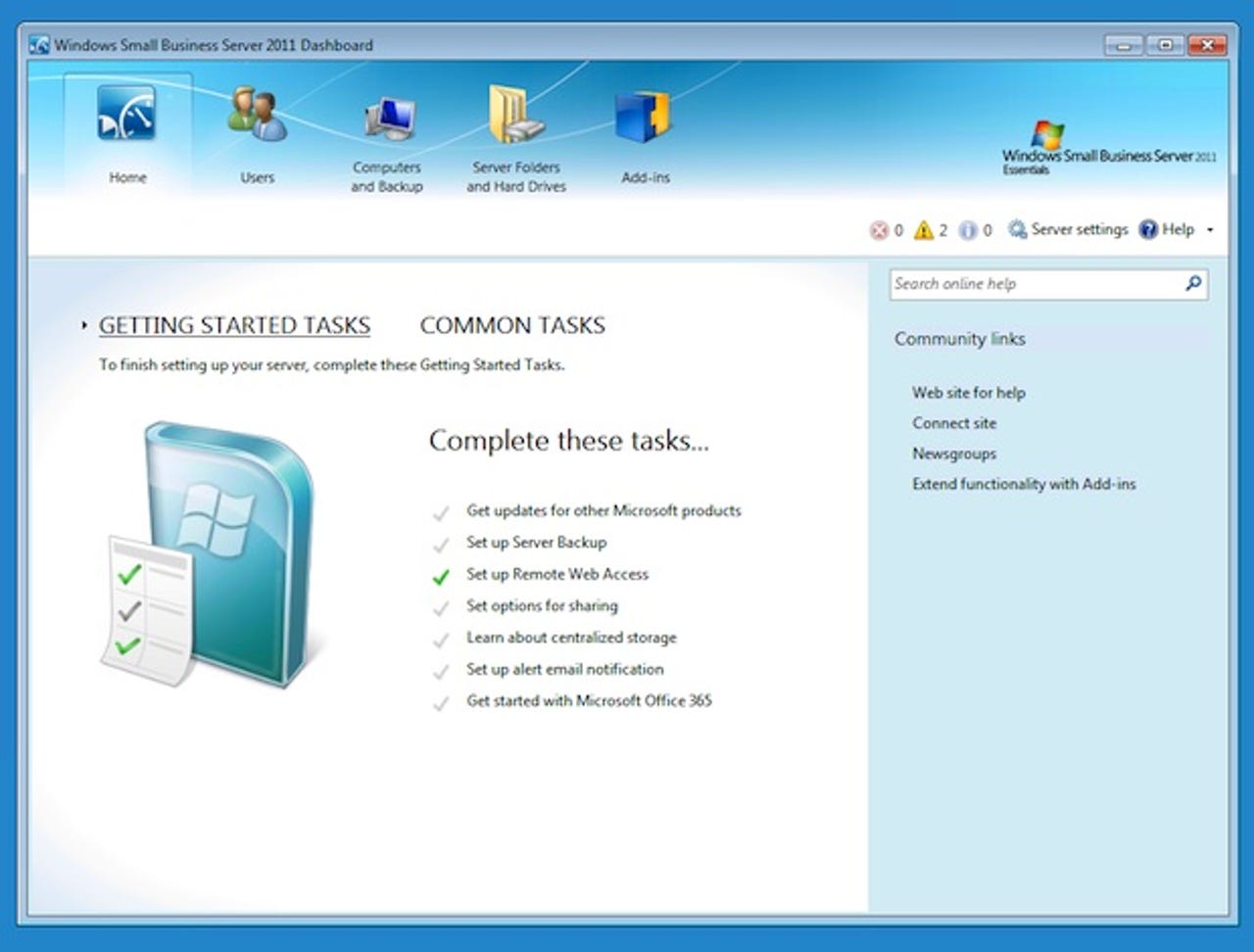Windows Small Business Server 2011 Essentials

Microsoft recently unveiled a release candidate for Windows Small Business Server 2011 Essentials, the name it's chosen for the server codenamed Aurora. Microsoft's new server for very small businesses has seen some changes since last year's beta. For one thing, Microsoft controversially pulled the new version of its Drive Extender storage fabric from the entire 'Colorado' family of servers (the codenames for the second generation Home Server-derived servers were all Colorado place names) — the one technology that differentiated them from more conventional server platforms.
SBS Essentials 2011, which supports up to 25 users, is intended for very small offices and branch offices — where in the past businesses would have just deployed a Windows workgroup and perhaps a small NAS for backup and shared storage. But storage demands and user requirements have changed, especially with the arrival of a new generation of cloud services. Those changes mean, at least according to Microsoft, that there's a market opportunity for a server that can automatically manage backups and basic system management for a small network, with centralised storage and simple tools for working with federated identity services — meaning that users only need to sign on once, and still get secure access to the cloud.

SBS 2011 Essentials is designed to be run headless, using a remote dashboard on a client PC. Tasks are simple and, wherever possible, wizard driven
The original Windows Home Server delivered a lot of that, but was missing one big piece: Active Directory support. SBS Essentials 2011 takes Home Server's simplicity (and the option to quickly deploy it as a headless server managed from a remote console or in the browser), building on top of Windows Server 2008 R2 with a simplified Active Directory management platform.
The biggest change between the beta and the RC is, of course, the removal of Drive Extender. It has been replaced by a Move Folder wizard that's intended to simplify moving data from one disk (or disk array) to another as you add additional drives to a chassis. Intended solely for use with server folders, it's not the zero-intervention approach of Drive Extender, but it does save you from having to use Explorer to move folders and shares (and also means you can use the console rather than having to open a remote desktop connection to your server).
Server Folders are an important piece of SBS 2011 Essentials, as they're used to handle files and folders for users and groups — and are automatically available to connected devices, with user properties used to control access
Moving a folder to another drive in the Move Folder wizard is easy enough. Just add a new drive, with enough space for the folder you want to move, and then choose a target drive for the server folder. There's an option to help choose a drive with enough space, and once you click Move folder the process is automated. You'll need to change your backup settings to work with the moved folder, and there doesn't seem to be any option to automatically map restores of old versions to the new location.
We found Move Folder easy enough to understand, but it's not really a substitute for Drive Extender's simplified storage fabric. Microsoft's decision to remove it is understandable, but given some of the issues reported, what we're left with is a basic version of Windows Server for up to 25 users with a simplified management shell. That's still enough to make it a winner, as the target market doesn't need the complexity of an unmasked Windows Server 2008 R2 machine.
It's no substitute for Drive Extender, but the new Move Folder wizard at least makes it easy to move server folders from one drive to another without needing changes on user PCs
Connecting a PC to SBS 2011 Essentials is a lot easier than setting up a standard Active Directory client PC — in fact it's something that doesn't need IT intervention. All users need is the URL of the server directory from where they can download the client software. Once that's downloaded they'll be walked through an installer that handles joining the PC to the domain as well as migrating files and settings from the old account to the new. Once PCs and users are set up you can use the console to check PC health and handle automated device backups — one of SBS 2011 Essentials key features.
We were surprised by some of the more obvious quality control issues with the release candidate. Too often we came across dialogue boxes and content that referred to 'Aurora' rather than SBS Essentials — in fact at one point we had to double-check we were installing the correct version! Although the underlying code is sound (and it should be as it's Windows Server 2008 R2), the fit-and-finish of the RC isn't quite there. Perhaps we've been spoilt by the quality of recent betas from the Windows team, but oversights like this should be a thing of the past. We'd hope that's Microsoft's main focus for the last few weeks before release to manufacturing, but with key items like the Office 365 connector outstanding we suspect that there's still rather a lot on the Small Business Server team's plate.
Even so, despite its flaws, Windows Small Business Server 2011 Essentials RC shows promise. There's a definite need for a more active, but still light-touch, server to replace the small-office NAS, and this is that server. The demise of Drive Extender has removed a major differentiator, but if Microsoft can get hardware OEMs on board with low-cost RAID arrays in headless servers with SBS 2011 Essentials preinstalled then it's still in with a chance — although, as always, price will be the final arbiter. The RC can be downloaded from Microsoft's Connect beta test service.